About five years ago I developed a top selling vertical jump program, which I used myself to go from average to the elite 44″ vertical. Since then I’ve been looking to push that ceiling with the key factors for vertical jump development.
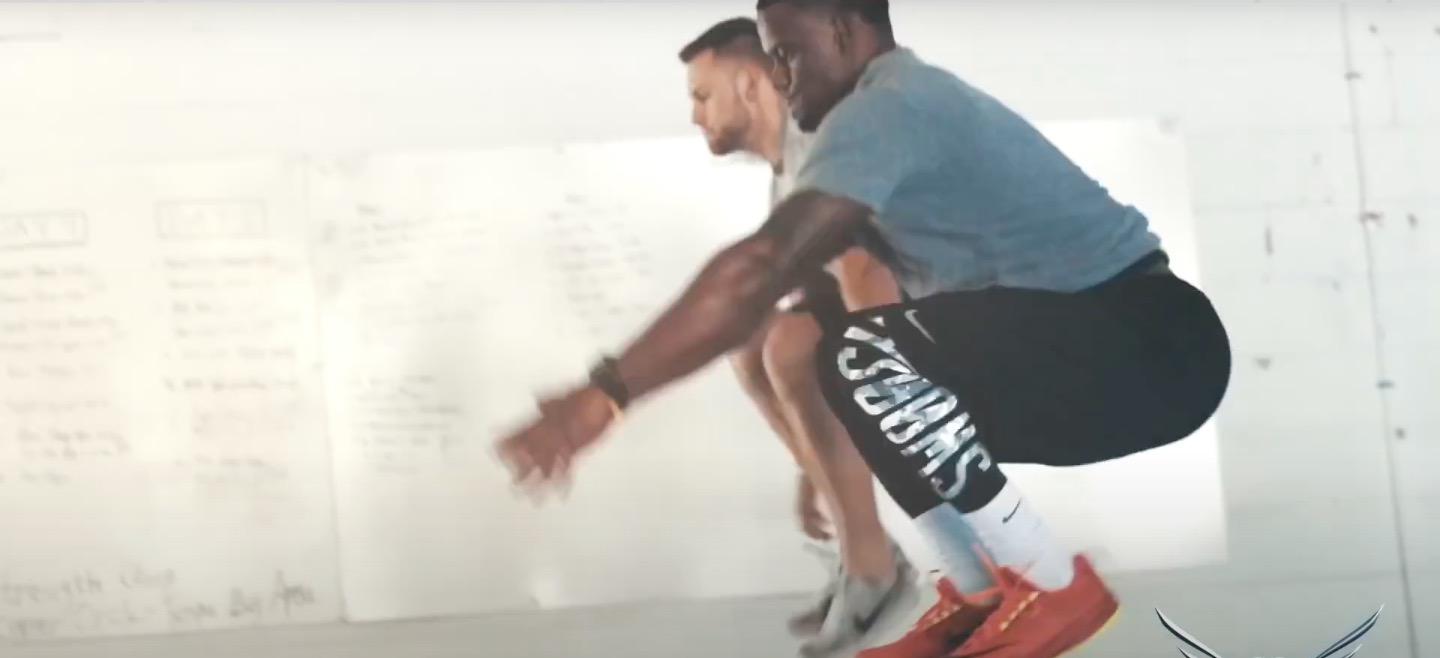 That’s why I want to start sharing some of these findings with you guys.
That’s why I want to start sharing some of these findings with you guys.
This is a collection of everything I’ve been utilizing, and the insane results my athletes have been experiencing.
Let’s get into it
VERTICAL JUMP DEVELOPMENT
Some of this information might be common sense to the athlete that lives and breathes training. However, I’ll also be showing you the importance behind why we stress these key factors for vertical jump development.
1. LOWER LIMB DEVELOPMENT
One of the biggest things I believe coaches and athletes lack in their jump training is development of the foot and ankle complex.
The foot is what makes contact with the ground every time you jump.
You would never drive a race car capable of 1,000 horsepower, without upgrading the tires and the suspension first right?
There’s two key factors in particular we’re looking to strengthen for vertical jump development:
- Medial Arch
- Calcaneal Tendon (Achilles)
These are the two areas of the foot that are most responsible for absorbing force. To optimize these, we’re looking to focus on three pieces in particular to produce an elite vertical jump.
1. Active/Passive Range of Motion (flexibility)
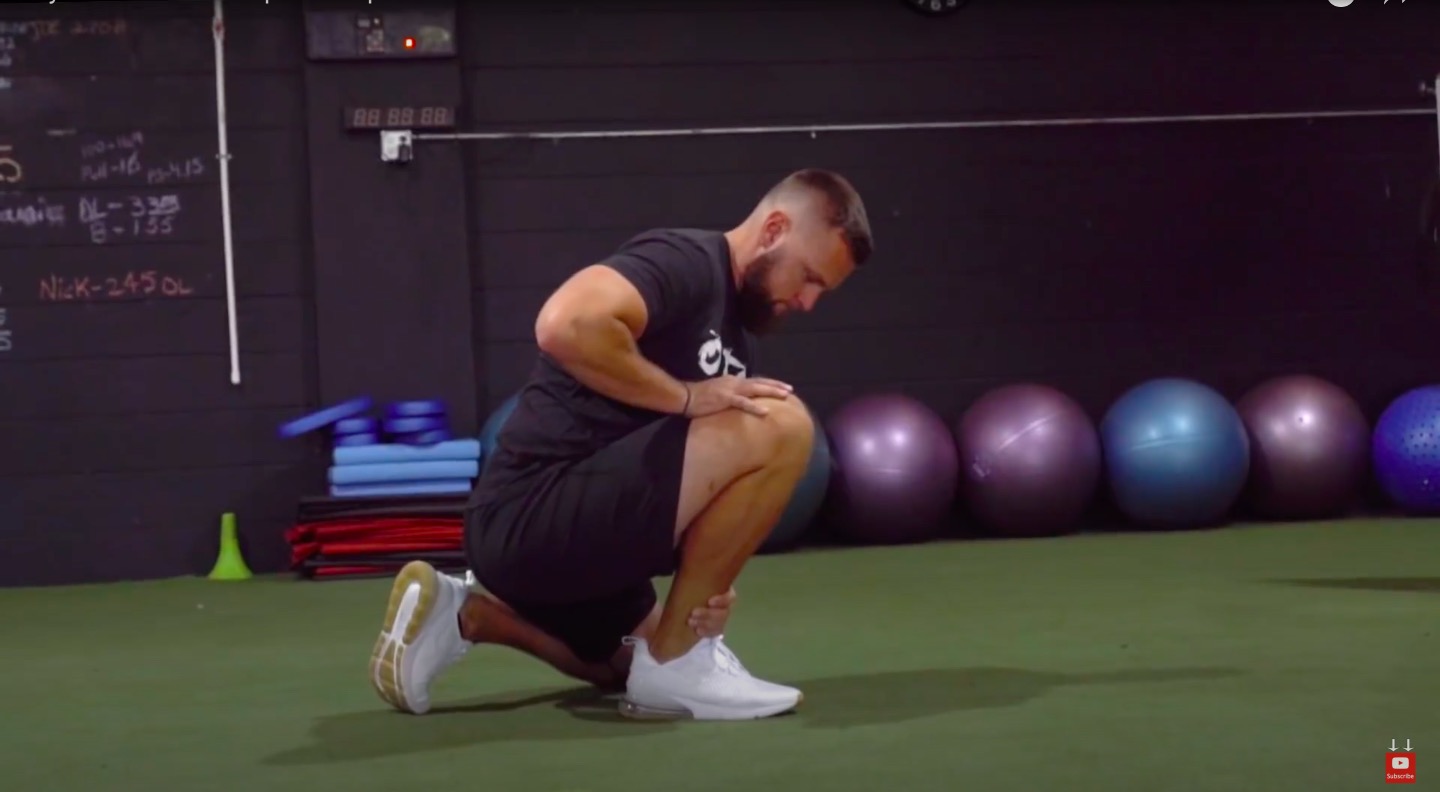
Things like bulky sneakers and ankle braces aren’t beneficial towards building strength within the feet. These decrease the range of motion you can work through and therefore lead to injury.
Therefore we want to further increase your active and passive flexibility through things like static stretches and a few other modalities.
2. Elastic Strength

Next we want to focus on increasing the elastic strength within the medial arch and the achilles tendon.
What does this mean?
We’re increasing the body’s ability to have a rubber-band-like effect. This allows you to absorb great amounts of force through the stretch shortening cycle (as the muscle rabidly contracts and relaxes).
We can enhance this with a progression of low-level plyometrics, like pogo jumps which work through the foot and ankle complex.
3. Static Strength


You can enhance drastically increase static strength within the foot and ankle by performing various unilateral strength movements.
Contrary to typical lifting, while vertical jump training the heel should be elevated so that you learn to produce force through the ball of the foot.
Usually we perform our main compound lifts while grounded, but this doesn’t translate perfectly onto the field or court.If you watch an athlete perform in a game setting, you’ll notice that most movement occurs through the balls of the feet.
By training in this modality with particular strength movements, we can increase the static strength and tendon stiffness of the achilles and medial arch.
2. KNEE STABILITY
Moving up the lower body chain through the foot and ankle, we arrive at the knee.
Our goal of training across the knee, is to better develop the ability to absorb and produce force.
The role of the knee itself is stabilization.
By working to prevent injury and strengthen the knee joint, this will enable the hip to produce more torque and therefore force.
1. Hip/Ankle Flexibility
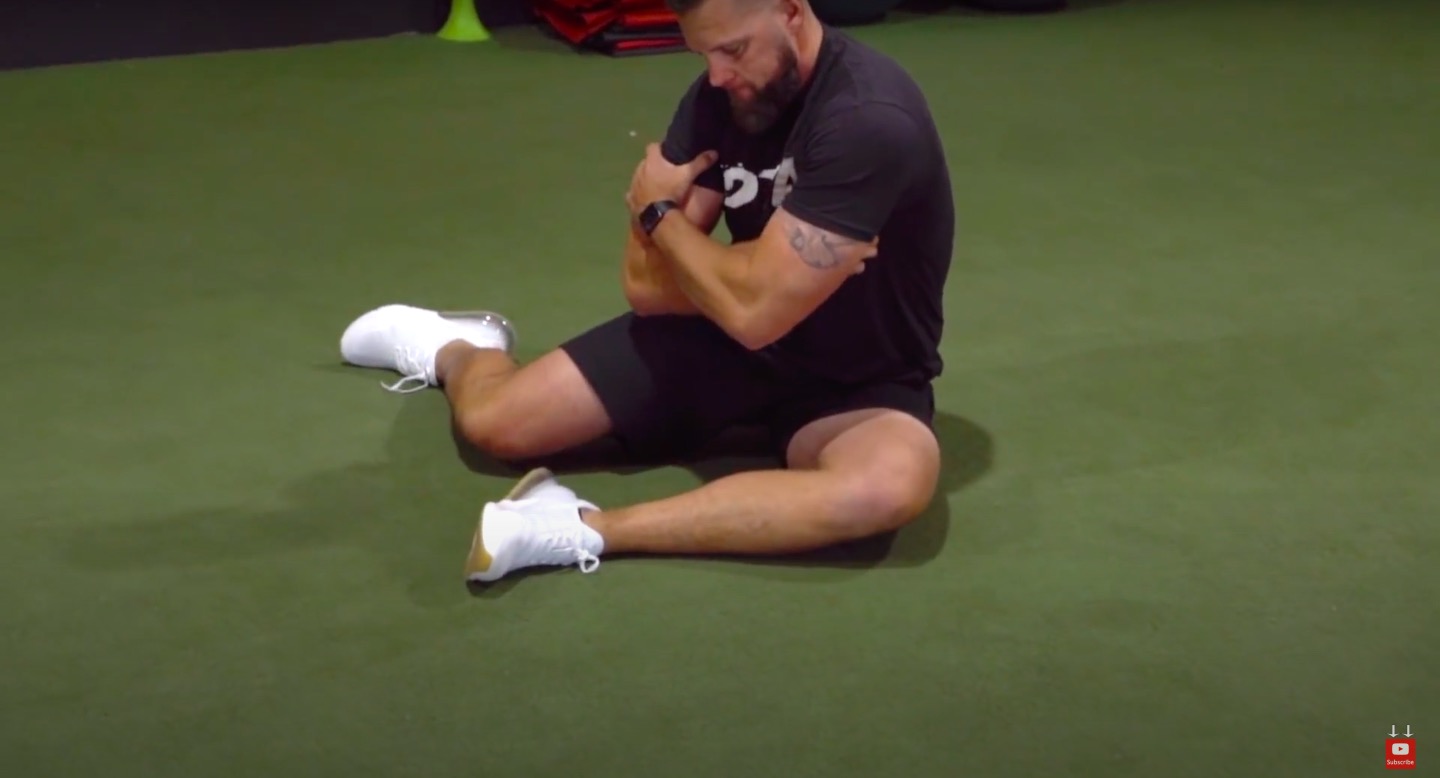
While some knee injuries are contact related, most are due to having a restricted range of motion through the ankle or hip.
The knee takes on a lot of stress trying to make up for this.
Therefore it’s essential to maintain good flexibility and ROM through both the foot/ankle complex and the hips.
2. Tendon Strength
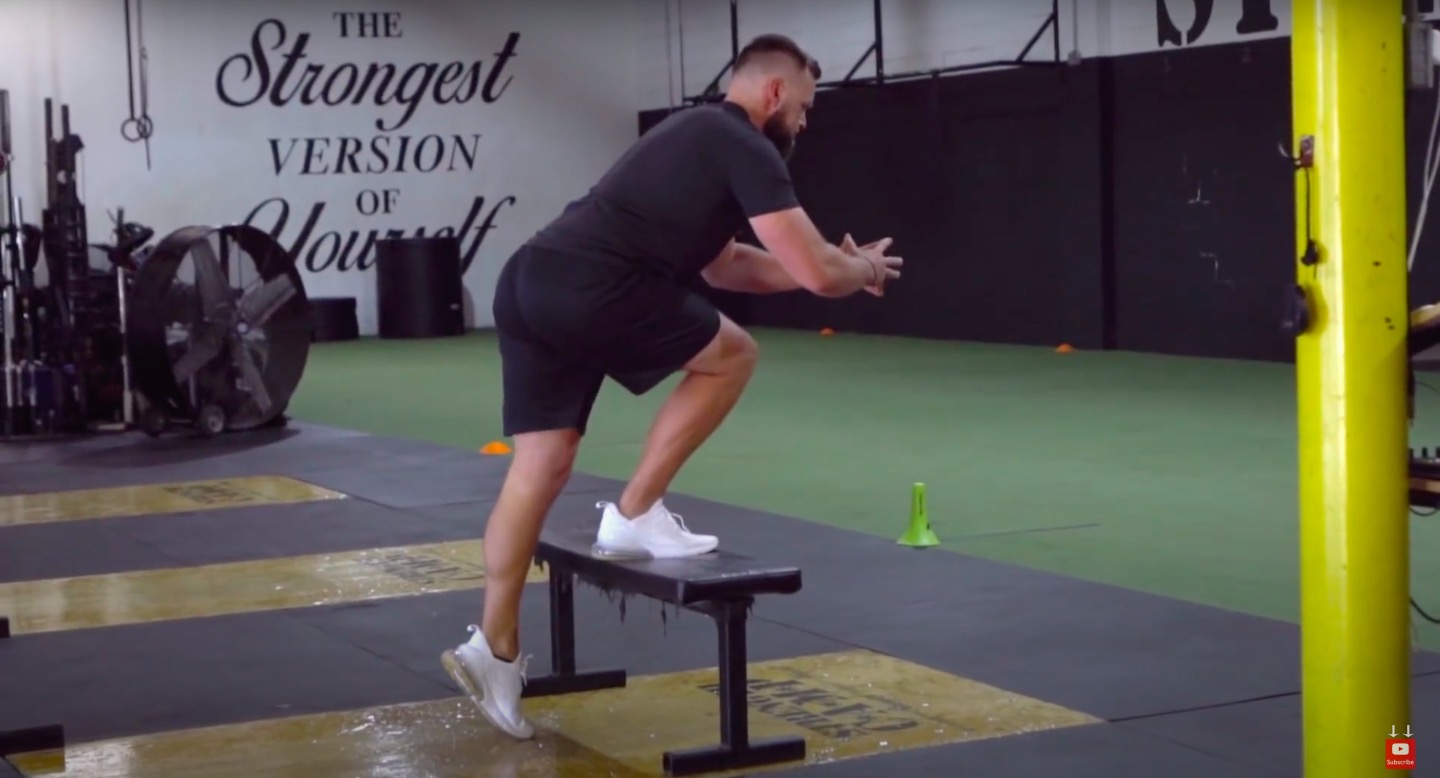
Our next focus should concern strengthening the multitude of tendons and ligaments which surround the knee joint.
This might include various exercises such as iso step downs, deceleration step downs and banded terminal knee extensions. These all require you to work through a greater active range of motion and simultaneously increase your flexibility and strength.
3. Strengthen Hamstrings/VMO
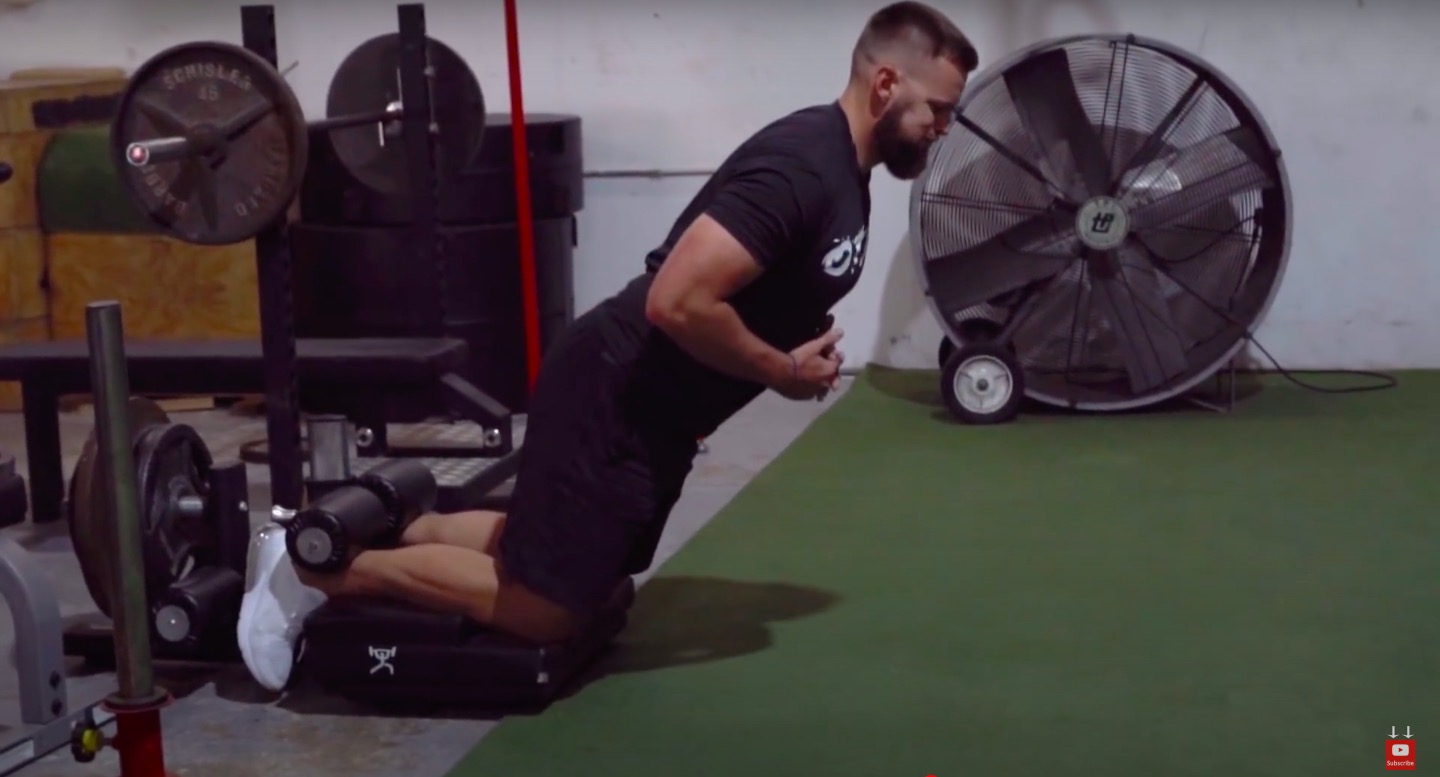
Finally we want to strengthen the muscles which are responsible for stabilizing the knee. These are mainly the hamstring and the VMO (vistas medialis oblique).
There’s a few particular ways to stress and progress the strength of these muscles in order to increase your overall peak performance in the vertical jump.
3. HIP STRENGTH AND POWER
Lastly our focus is on hip strength and power: the most important key factor for vertical jump development.
Think of this in terms of upgrading the engine on your race car. Now that the body of your car is leveled up, we’re ready to add more torque and horsepower.
Working on hip strength and power is where I’ve seen myself and my athletes make some of our greatest developments in the vertical.
If you follow along, you’ll see some of the guys in my gym hitting crazy jumps…

One of the most important elements of my new training system is the sequential order in which we train each key factor in vertical jump development. By developing a strong base and building upon each strength, your power will be through the roof.
I can’t relay to you enough, just how much of a difference it makes to stress the body in a specific order (I’ll share more in Part 2).
Another huge factor is that the plyometrics should match the strength.

For example, a younger or newer athlete just starting their vertical jump journey shouldn’t be performing high-level plyometric drills.
Doing this won’t help to lay out your training sequentially and definitely doesn’t establish the proper building blocks.
Your progressions need to follow along with how you’re progressing in your own strength.
When you follow these guidelines, you’ll get maximal adaptation for each particular modality.
ELITE VERTICAL ACADEMY
My newest program was created as a modified version of triphasic training.
This is a particular style of strength and conditioning developed by coach Cal Dietz. It was through this style of training that I was able to get over my plateau and hit a 44″ vertical.
Since then after years of experimenting, I’ve found a way to modify this style of training which I’ll share more about in my upcoming program.
Not only is this programming based off some of the most up-to-date scientific literature from the training world… IT WORKS.
The results we’re seeing at my gym prove this, day in and day out.
To learn more about:
- How I’ve modified triphasic training for vertical jump development
- The exact ways I periodize vertical jump training
Be sure to check out the Elite Vertical Academy.
Otherwise known as the only vertical jump program proven to push your genetic potential and explode your vertical jump by 8-12 inches in only 16 weeks.
1 Response to "Key Factors for Vertical Jump Development: Part 1"
[…] in Tampa Bay). You can train with me 1-on-1 here. A lot of my athlete’s are looking to improve their vertical jump and overall force output, which tends to result in jumper’s […]